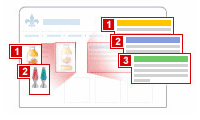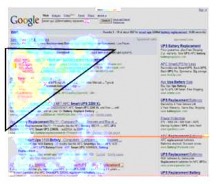Have you ever wondered how high budget websites achieve their pleasing layouts? They use something called Multivariate Testing to scientifically test different versions of the website. This determines which test website creates the most conversions (sales) or retains visitors the longest.

Multivariate Testing: A process by which more than one component of a website may be tested in a live environment. It can be thought of in simple terms as numerous split tests or A/B tests performed on one page at the same time.
So how does it work?
Step 1: The marketer determines how detailed he wants the test to be. Depending on how much time or traffic is available, the marketer will choose many or few variables. MVT (Multivariate Testing) experiments can be mapped with an array.

This experiment has three test elements with two different variables of each.
Step 2: Element Selection - Once you have determined how detailed you want your test to be; you must now select which parts of the site to test. These include: Headlines, Navigation, Offers, Text Format, Price, and Buttons.
Step 3: Element Variation - After choosing what elements to modify, the next step is to decide what modifications to make. This is the most creative process of MVT. How should you address your audience; should you be emotional? stern? helpful? should you sound like an expert? How should you site look? should you give the user many choices, or few? should your site have moving parts? Should you erase those buttons or keep them?

It is helpful to know that viewers tend to look at the top left of a screen and move from there. Here is a heat map of the Google search page. Red marks where viewers tend to look the most.
MVT Software: Includes SiteSpect, Omniture, and many others. As MVT can be a tremendously profitable activity, software has been historically expensive. In 2007 Google released their free website optimizer.
Multivariate testing allows great marketers to become exemplary.
 RSS Feed
RSS Feed